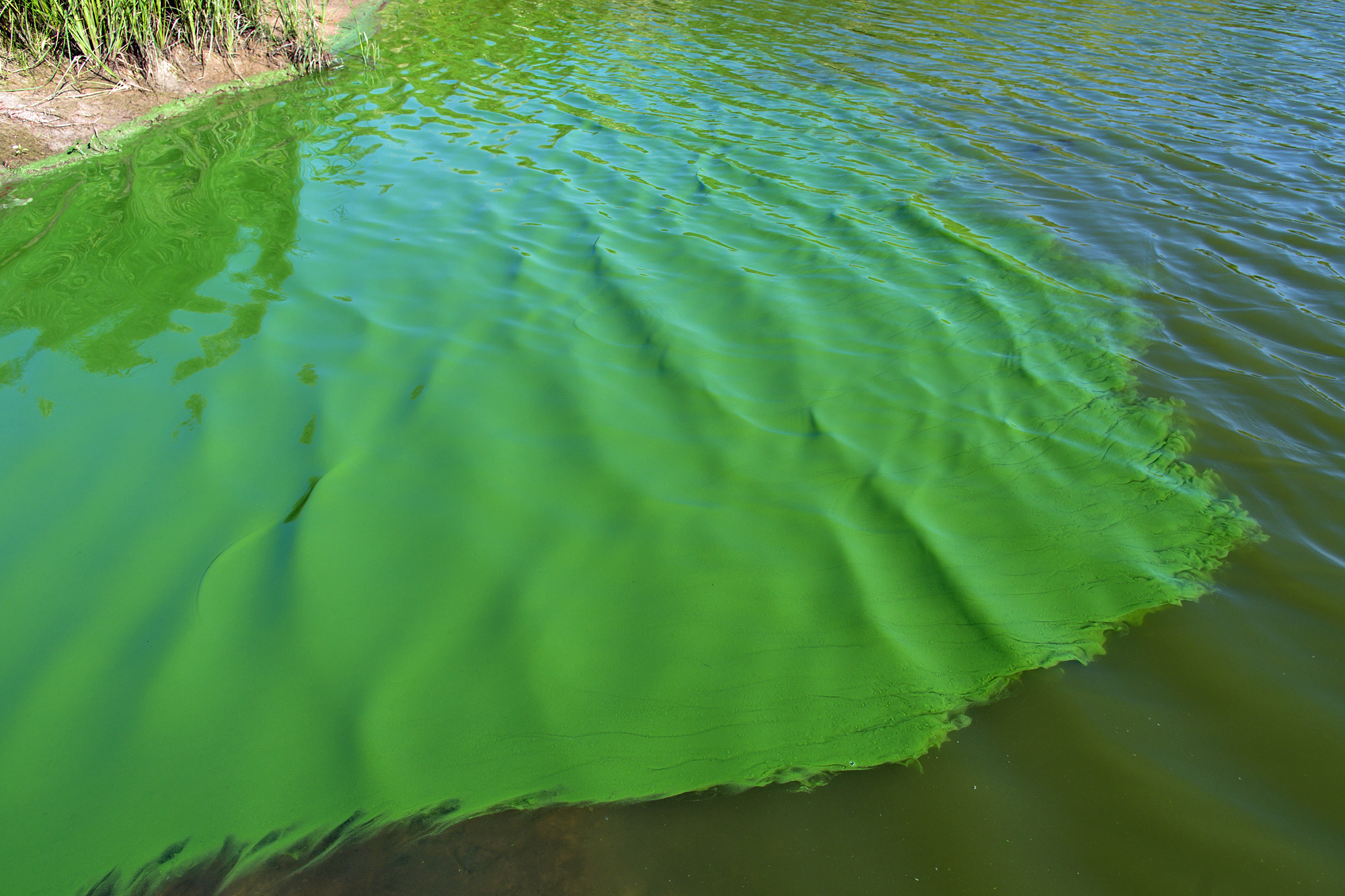Cyanobacteria Bloom
What is a cyanobacteria (blue-green algae) bloom?

Blooms occur when there is a dramatic increase in the cyanobacteria population. The bloom may be composed of multiple species, or it can be dominated by a single type of cyanobacteria. Blooms are more likely to occur in freshwater, especially in warmer weather and in ponds where nutrient levels are elevated. While it varies based on the type of cyanobacteria, blooms often turn the water bright blue-green (hence the name blue-green algae) and can form a surface scum or mat. Cyanobacteria blooms are important to monitor because many species have the ability to produce toxins. In general, if you see water that looks like pea soup, or any discolored water with a layer of scum on the surface swimming should be avoided.

